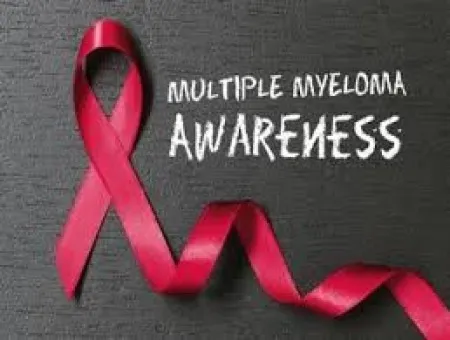These cells are vital to the immune system, producing antibodies that help fight infections. However, in multiple myeloma, these plasma cells become abnormal, multiplying uncontrollably and leading to various health complications. This article aims to provide an in-depth look at multiple myeloma, its symptoms, risk factors, diagnosis, and treatment options.
What is Multiple Myeloma?
Multiple myeloma is classified as a hematologic cancer, meaning it originates in the blood or bone marrow. It is a relatively rare form of cancer, but it is the second most common blood cancer after non-Hodgkin lymphoma. The abnormal plasma cells, known as myeloma cells, accumulate in the bone marrow, where they interfere with the production of normal blood cells. This can lead to a variety of symptoms and complications, including anemia, bone pain, kidney dysfunction, and increased susceptibility to infections.

Symptoms of Multiple Myeloma
The symptoms of multiple myeloma can vary widely depending on the stage of the disease and the organs affected. Common symptoms include:
- Bone Pain: This is often the first symptom, particularly in the spine, ribs, and pelvis. The pain is due to the myeloma cells weakening the bones, making them more prone to fractures.
- Fatigue and Weakness: As the disease progresses, it can cause anemia, leading to feelings of fatigue, weakness, and shortness of breath.
- Frequent Infections: The compromised immune system in multiple myeloma patients can result in frequent infections, particularly respiratory infections.
- Kidney Problems: High levels of calcium and proteins produced by the myeloma cells can damage the kidneys, leading to kidney dysfunction or even failure.
- Hypercalcemia: Elevated calcium levels in the blood can cause symptoms such as nausea, constipation, confusion, and excessive thirst.
Risk Factors for Multiple Myeloma
The exact cause of multiple myeloma is not known, but certain risk factors have been identified:
- Age: The risk of developing multiple myeloma increases with age, with most cases diagnosed in people over 65.
- Gender: Men are slightly more likely to develop multiple myeloma than women.
- Race: African Americans have a higher incidence of multiple myeloma compared to other racial and ethnic groups.
- Family History: Having a close relative with multiple myeloma or another plasma cell disorder increases the risk.
- Pre-existing Plasma Cell Disorders: Conditions such as monoclonal gammopathy of undetermined significance (MGUS) can precede multiple myeloma.
Diagnosis of Multiple Myeloma
Diagnosing multiple myeloma typically involves a combination of blood tests, urine tests, imaging studies, and bone marrow biopsy. Key diagnostic tests include:
- Blood Tests: These are used to detect abnormal levels of calcium, blood cells, and specific proteins like monoclonal protein (M protein), which is produced by myeloma cells.
- Urine Tests: The presence of Bence Jones proteins in the urine can indicate multiple myeloma.
- Imaging Studies: X-rays, MRI, or CT scans are used to detect bone lesions or fractures.
- Bone Marrow Biopsy: This involves taking a sample of bone marrow to look for myeloma cells.
Treatment Options for Multiple Myeloma
While multiple myeloma is currently considered incurable, several treatment options can help manage the disease and improve quality of life. Treatment plans are often tailored to the individual's health, age, and the stage of the disease. Common treatment options include:
- Chemotherapy: This involves the use of drugs to kill or slow the growth of myeloma cells.
- Targeted Therapy: These drugs specifically target the abnormalities in myeloma cells that allow them to thrive.
- Immunotherapy: This treatment boosts the body's immune system to help fight the cancer.
- Stem Cell Transplant: This procedure involves replacing the diseased bone marrow with healthy stem cells.
- Radiation Therapy: Used to target and kill myeloma cells in specific areas, particularly where they are causing bone pain or other localized symptoms.
- Supportive Care: This includes treatments to manage symptoms and side effects, such as pain relief, bisphosphonates for bone health, and medications to manage anemia or prevent infections.
Living with Multiple Myeloma
Living with multiple myeloma can be challenging, but advances in treatment have significantly improved outcomes for many patients. Regular follow-up care is essential to monitor the disease and manage any complications. Support from healthcare professionals, family, and support groups can also play a crucial role in coping with the physical and emotional aspects of the disease.
Conclusion
Multiple myeloma is a complex and serious condition that requires ongoing medical attention. While it remains a challenging disease to treat, the advancements in medical research and treatment options provide hope for improved survival rates and quality of life. Understanding the symptoms, risk factors, and treatment options is crucial for those affected by multiple myeloma and their loved ones.
